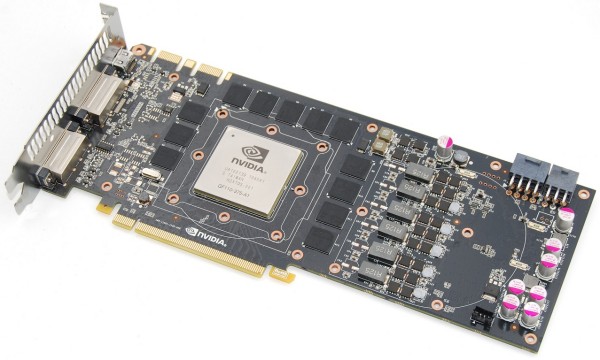Nvidia unveiled its first Fermi graphics cards last March, the GeForce GTX 480 and GTX 470 were about six months late. Based on the GF100 architecture, both cards consumed a surprising amount of power and as a result ran extremely hot. It goes without saying that we were a bit disappointed in the launch, here's a snippet of what we had to say about the GTX 480 then...
"By all accounts the GeForce GTX 480 is not the beast we were hoping it would be. It's main competitor, the Radeon HD 5870 is no slouch, so beating it in almost every test is a real accomplishment, however in many cases it wasn't a great deal faster which makes it harder to justify a price step up against the 6 month old Radeon."
Nvidia was able to improve the performance of both, the GeForce GTX 480 and GTX 470 over the following months, which did improve their position. But still the cooler, quieter, and cheaper Radeon HD 5870 made a very compelling case and we preferred it to the flagship Fermi offerings.

By early July, Nvidia had enough time to develop a proper cut-down version of the GF100, codenamed GF104. The new GPU gave life to the GeForce GTX 460, a more power-conscious offering that went on to offer the perfect performance vs. price ratio for mainstream consumers.
To answer the immediate threat of the GTX 460, AMD was forced to cut pricing of its Radeon HD 5830 and followed that up late last month with the launch of its Radeon HD 6800 series. The Radeon HD 6870 and 6850 graphics cards out-compete both the 768MB and 1GB GeForce GTX 460, effectively ending its 3-month reign and putting pressure back on Nvidia.
Now staring down the barrel of AMD's 6900 series (due next month), Nvidia has decided to fire the first shot. Fermi is back with vengeance, introducing the new GF110-based GeForce GTX 580.
Despite its new naming scheme, the GeForce GTX 580 is basically a refined GTX 480. When it launched back in spring, the GeForce GTX 480 was not the product Nvidia intended. It was light on streaming multiprocessor cores and TAUs (Texture Addressing Units), packing only 480 of 512 possible cores and 60 out of 64 potential TAUs. The GeForce GTX 580 features all 512 SMs and 64 TAUs along with a few other tweaks.

The GF104 (GTX 460) architecture was updated with new texture hardware that improved performance, and this same design is used in GF110 boards. Originally, the GF100 was able to compute a single texture address while fetching four 32bit/INT8 texture samples, two 64bit/FP16 texture samples and one 128bit/FP32 texture sample per clock. The GF104 and GF110 are able to compute a single texture address while fetching four 32bit and 64bit texture samples.
Nvidia says the tessellation boost is possible thanks to improved Z-culling, another critical adjustment which means the card spends less time rendering polygons you won't see. This should make the new GeForce GTX 580 even more potent in titles that make heavy use of tessellation such as Metro 2033.
Nvidia also claims the GeForce GTX 580 runs cooler and quieter than the GeForce GTX 480 while delivering better performance. That's an exciting prospect for gamers, so we look forward to put this Asus GeForce GTX 580 board through its paces, but first let's take a closer look at the hardware itself.
